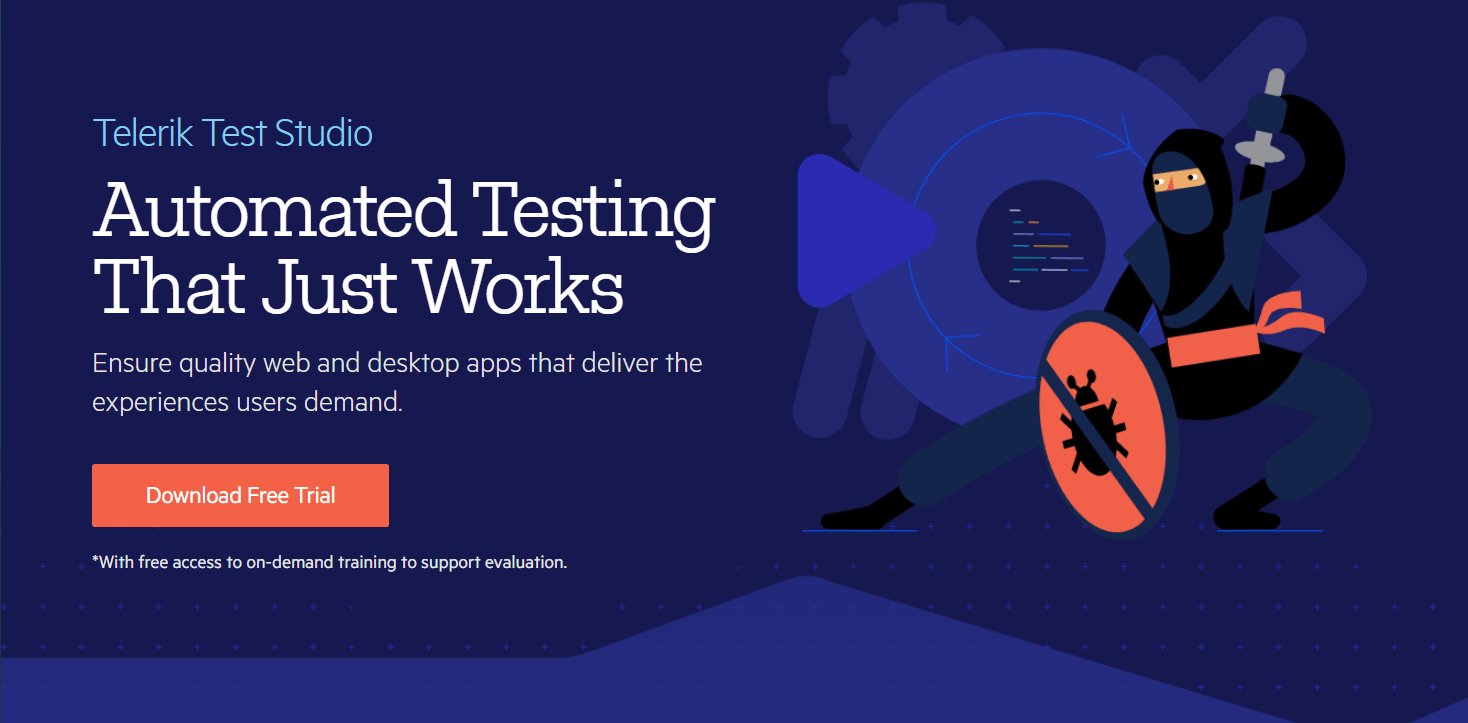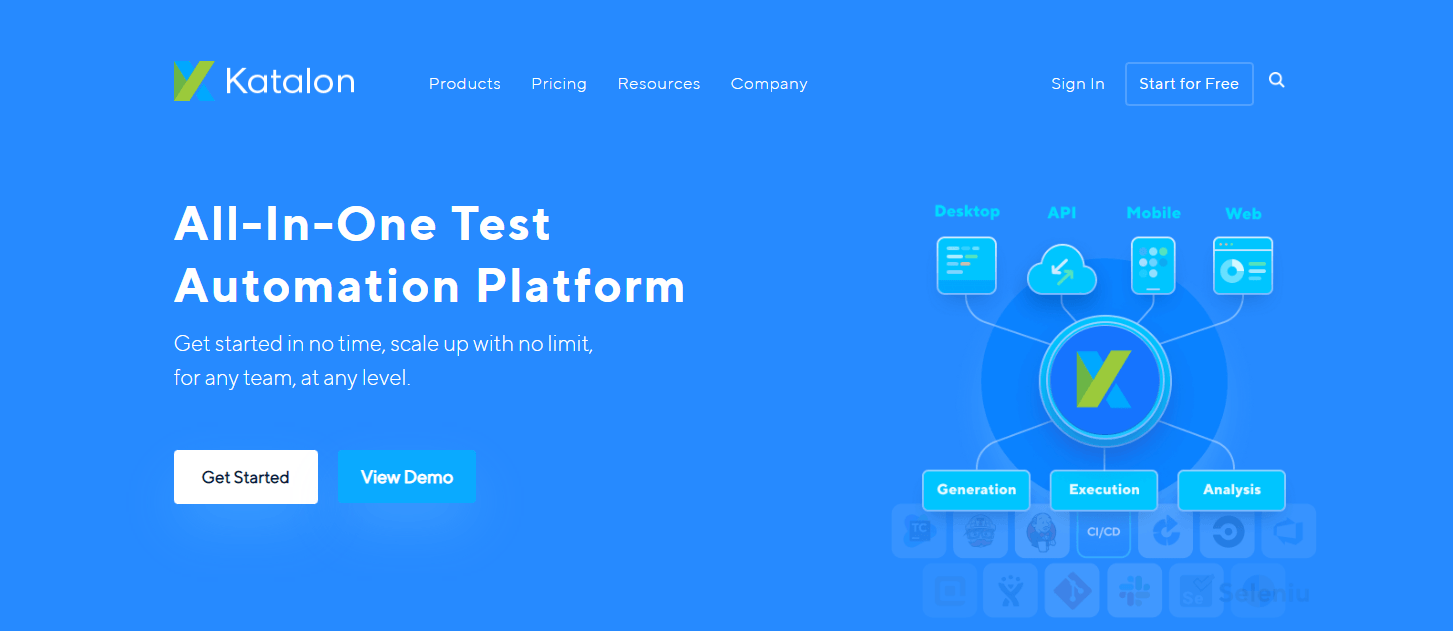Codeless Testing: Making the Case To Invest in Codeless Testing

This guide explains codeless testing and how to convince management to invest in codeless testing to improve the software development process. Learn tips on what data to include in a professional, detailed proposal for adopting codeless testing to positively impact the bottom line—plus the top codeless testing tools to evaluate.
Do you need test automation to supplement manual regression testing? Are you frustrated by long regression testing cycles within an Agile development team? Do you need more testing done during development to match your Agile speed? Codeless testing provides supplemental, efficient testing for manual regression or functional testing. Codeless testing lives for Agile, and may reduce the need for long manual regression testing cycles.
So what’s the best approach to integrating codeless automation into your development cycle and test strategy plan? After all, can you spare developers for coding test automation or does your QA testing team have the time to stop and spend time learning a coding language? If the answer is “yes,” that’s a distinct advantage. If the answer is “no,” then codeless testing provides what you’re looking for.
What Is Codeless Testing?
Codeless testing is test automation that writes the code or script in the background without requiring the tester to be a coder. In that manner, it’s not new. The new codeless testing automation technology also uses modular test design, integrates with test management systems, and uses AI/ML (Artificial Intelligence/Machine Learning) to significantly reduce test maintenance needs.
Codeless test automation isn’t codeless, but the name means basically anyone on the development team with or without coding knowledge can effectively contribute to creating automated tests. Codeless automation tools leverage record and playback with the added advantage of the AI/ML technology that provides reusability, stability and near-zero test maintenance.
Top 7 Codeless Testing Tools
Automating a full suite of tests can be a daunting, time-consuming project. There’s learning the tool, selecting the tests to automate, test execution, debugging and test maintenance. Codeless testing involves less training and depending on the approach less time performing maintenance. There are thousands of tool options available. Many developer toolsets contain a codeless automation option, but it may not quite have all the features needed. If not, many codeless tools integrate with other systems testers and developers have a plethora of useful options.
The following seven tools have the highest average ratings for ease of use and features. Most tools offer a free trial period or pay-for-use fees. Try a few out and see which ones work best for the software application, coding language and platform used.
Codeless testing tools sample list:
Test Studio

- Built on top of the proprietary .NET-based Telerik Testing Framework, the Test Studio test automation tool provides DOM parser and a robust user interface.
- Test Studio’s features assist in avoiding spending excess time on debugging and test script maintenance.
- Test Studio includes integrated API and load testing features, providing depth and breadth to the testing suite.
Selenium IDE

- Selenium Web Driver extension that adds a DOM parser and an intuitive graphical user interface. Offers DOM tree testing as well as OCR and an element detection feature.
- Works across browsers for web and mobile application testing.
- Easy and powerful debugging tools save time on scripting, execution, failure analysis and script maintenance.
- Exceptional online support through user groups and documentation.
Cypress
- Designed for testing frontend UI JavaScript, Cypress provides an open source that works for more than JavaScript.
- Runs within a browser and provides visual feedback during test execution. Reduces time spent debugging tests or failure analysis by including understandable error messaging.
- Can be set up to run automatically on a continuous integration server or for CI/CD.
Katalon Studio

- A top-performing and popular test automation tool. Katalon won the 2020 Customers’ Choice in Software Test Automation.
- Provides impressive application testing features for APIs, web and mobile.
- Has an intuitive user interface to create codeless test suites for most users, as well as additional features for editing and enhancing test scripts for more advanced test automation professionals.
AccelQ
- AI-powered solution for web, desktop and even mainframe applications.
- The AI engine assists in speeding up test debugging and maintenance using a self-healing feature, element detection and natural language processing.
- Integrates into most systems for use with DevOps, QA and developer testing.
Perfecto
- Cloud-based test automation tools for mobile and web applications.
- Includes AI features for error messaging and self-healing capability. Both features assist in creating test scripts that require less debugging and script maintenance.
- Built for CI/CD processing.
- Provides exception bug capture tools for analyzing failures from application defects.
Ghost Inspector
- One of the early codeless testing tools that remains a solid option for simplicity, ease of use and portability across code languages.
- Runs from any browser for recording tests. Users can schedule or check on test execution progress.
- Includes the option to compare videos and screenshots for each test, making writing up defects more effective.
Benefits of Codeless Testing
The primary benefits of implementing codeless testing within a software development team revolve around rapid ROI, improving team productivity, and achieving a higher quality application each release cycle. ROI speed is critical for the business as well as the development and test teams. No one wants to invest in their skillset and then have the project scrubbed. There are few worse feelings as a software tester than investing time, energy and brain power into learning a tool and process only to have it canceled because management didn’t get the return on investment at the speed desired.
Rapid ROI using codeless testing comes from reducing costs, improving application quality each release and releasing on time. One way to connect codeless test automation to business goals is by reducing costs. Development costs reduce when codeless test executions find defects or bugs earlier in the development cycle. For example, codeless test scripts created and executed during the design and coding phase find errors as well as missing requirements early and often. As part of test-driven development (TDD) or as each story or feature is completed, codeless test execution finds defects before the developer finishes coding. Finding code defects or missing requirements early saves delivery schedules and reduces wasted testing time, duplication of work and technical debt.
Team productivity increases as all team members including product team, test team and others can create codeless test scripts. Codeless test scripting is not reliant on coding or programming skills, so any development team member contributes to testing. The product team enhances their user acceptance or demo productivity by creating their own test suite that can be shared with the testing team for regression testing purposes. In other words, the development and testing work spreads out if needed, building work skills while ensuring increased product quality with fewer bottlenecks to releasing on time.
Other benefits of implementing codeless testing:
- Shortens delivery cycle time and increases release frequency.
- Enables more shift-left testing techniques.
- Testing coverage focuses on complex testing scenarios rather than basic functional testing.
- Product quality improves with consistent, low-maintenance codeless automated test execution.
- Codeless automated testing suites reduce manual testing execution by providing complementary and supplemental testing at all development stages.
- Reusable, modular codeless test scripts only need to be created once.
- AI/ML technology significantly reduces the need for test script maintenance.
Project Strategy Planning
How do we get the benefits understood across the business to make codeless testing part of the development process? The first step creates a project plan or strategy that focuses on the business value. In the project plan, stress the benefits of codeless testing and how to implement it successfully. Take the current development testing process and compare it to the new process with codeless testing.
While planning, analyze existing data on the current processes and note where improvements are needed. One possible resource for real data is the sprint or iteration review meeting typically held at the end of a release cycle. Additionally, consider interviewing product, test, development and customer support team members for ideas for improving the existing process and release results.
Within the plan, be sure to account for all resources and the impact on each. Provide examples of tools and training available. For example, codeless test automation tools like Telerik Test Studio offer online and in-person training for teams. Ensure the project plan includes examples of codeless test scripts using the business applications and how they integrate with the existing test management tool or overall test strategy. Test Studio offers free demo periods to create working examples, as do other codeless testing tools.
Creating a Winning Business Project Proposal
One critical piece of a winning codeless testing project plan is the details in form of a proposal. When writing a proposal for a new project implementation like codeless testing, focus on the overall business goals and advantages. In other words, describe how investing in codeless testing improves business value overall. Describe the business goals codeless testing achieves for the business as a whole, rather than only the advantages for the development team.
Many proposals fail not based on the idea or the benefits but on the proposal content. Project proposals fail when they include poor project definitions, are not aligned with organizational business objectives, or lack credible or actual factual data as evidence.
Every project plan and proposal must:
- Define and describe the problem with actual examples
- Present a solution
- Define the deliverables and how they are implemented successfully
- Map out an implementation plan for all affected business groups or resources
- Include specific success criteria based on business objectives and ROI: Provide facts, data, figures and visual graphics for clarification and evidence.
Implementing a successful codeless testing project involves understanding the benefits and the breadth of their reach. Codeless testing improves software development across the entire team of developers, testers, product and customer support. By improving test coverage, reusability and the ability to effectively develop valid automated test suites, codeless testing offers a quick return on investment.
Codeless testing tools like Test Studio leverage AI/ML technology to detect code changes in the user interface and automatically update test scripts. Test maintenance needs are reduced as is the need to re-create recorded scripts. Codeless resting operates on a modular test design and integrates with test management tools.
Implementing codeless testing begins with understanding the benefits to the development team and the business overall. Additionally, the adoption of codeless testing benefits from a thorough and detailed project plan that focuses on the objectives of the business as well as the software development team. Convince your business to implement codeless testing into your development processes and reap the positive benefits rapidly!
What comes next? Planning for success! Read on.

Amy Reichert
A QA test professional with 23+ years of QA testing experience within a variety of software development teams, Amy Reichert has extensive experience in QA process development & planning, team leadership/management, and QA project management. She has worked on multiple types of software development methodologies including waterfall, agile, scrum, kanban and customized combinations. Amy enjoys continuing to improve her software testing craft by researching and writing on a variety of related topics. In her spare time, she enjoys gardening, cat management and the outdoors.

